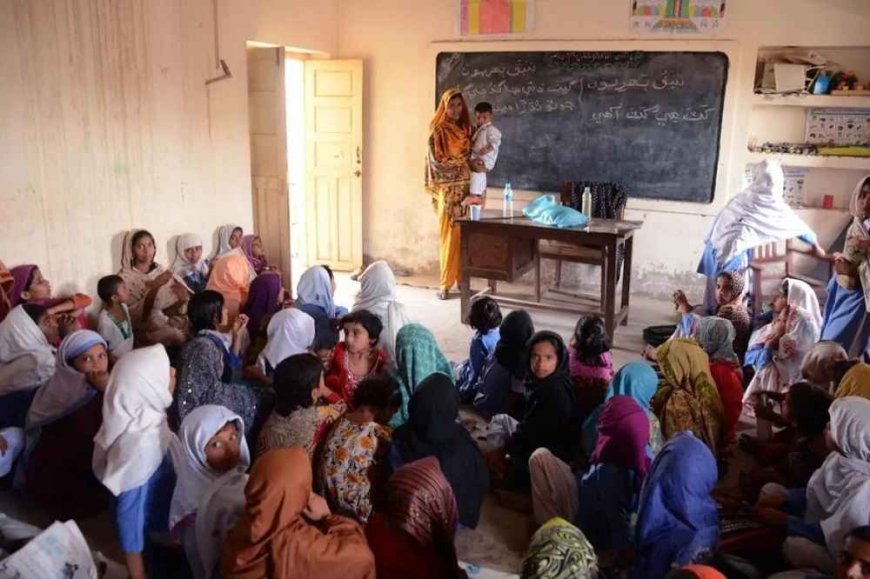Educational Inequality in Pakistan: Unraveling the Causes and Seeking Solutions
Educational inequality remains a pressing challenge in Pakistan, a nation striving to achieve social and economic progress.

Educational inequality remains a pressing challenge in Pakistan, a nation striving to achieve social and economic progress. Despite concerted efforts and investments in the education sector, disparities persist, depriving many of a fair chance at a quality education. A multifaceted issue, the causes of educational inequality in Pakistan are deeply rooted and interconnected, stemming from socio-economic, cultural, and infrastructural factors.
Socio-economic Disparities:
A glaring cause of educational inequality in Pakistan lies in the socio-economic disparities that pervade the country. A significant proportion of the population lives below the poverty line, struggling to make ends meet. This often translates into a lack of resources to support education, such as textbooks, school supplies, and uniforms. Children from impoverished backgrounds may be forced into child labor to supplement their family's income, thereby disrupting their educational journey.
Gender Discrimination:
Gender bias further exacerbates educational inequality, particularly in rural and conservative areas. Cultural norms and stereotypes perpetuate the belief that girls should prioritize household responsibilities over education. Consequently, girls often face restricted access to schools, early marriages, and limited opportunities for personal development. Initiatives aimed at promoting gender equality and women's empowerment are vital to combating this deeply ingrained issue.
Inadequate Infrastructure:
Lack of proper infrastructure and facilities in schools is a significant impediment to quality education. Many schools in rural areas lack basic amenities such as clean drinking water, sanitation facilities, and well-maintained classrooms. Inadequate infrastructure not only hampers the learning environment but also contributes to low attendance rates and dropouts.
Teacher Quality and Training:
The quality of education is intricately tied to the competence of teachers. Inadequate teacher training and low qualifications result in subpar instruction, hindering students' ability to grasp essential concepts. Additionally, the lack of incentives and low pay discourage talented individuals from pursuing teaching as a career, perpetuating the cycle of poor education quality.
Language Barriers:
Language plays a pivotal role in effective learning. In Pakistan, the language of instruction often varies from region to region, with Urdu and English being the predominant languages. Students from non-Urdu-speaking backgrounds may struggle to comprehend lessons taught in unfamiliar languages, leading to learning gaps and reduced academic performance.
Rural-Urban Divide:
The urban-rural divide is a prevalent factor contributing to educational inequality. Urban areas tend to have better educational infrastructure, resources, and access to technology. In contrast, rural regions face a dearth of quality schools, skilled teachers, and educational resources, resulting in an unequal distribution of educational opportunities.
Limited Government Spending:
Insufficient allocation of funds to the education sector remains a persistent issue. While Pakistan has made efforts to increase education spending, the allocation often falls short of the recommended benchmark of 4-6% of GDP. Inadequate funding compromises the quality of education and restricts the government's ability to address underlying causes of educational inequality.
Political Instability:
Political instability and governance challenges have hindered the consistent implementation of education policies. Frequent changes in leadership and policy direction disrupt long-term strategies for improving educational access and quality, impeding progress in narrowing the education gap.
Lack of Parental Awareness and Engagement:
Limited awareness among parents about the value of education and their role in supporting their children's learning contributes to educational disparities. Engaged parents play a crucial role in students' academic success, and efforts to raise awareness about the importance of education can lead to increased parental involvement.
Conflict and Security Concerns:
In regions plagued by conflict and security concerns, access to education becomes severely limited. Schools may be damaged or destroyed, and families may be displaced, disrupting children's educational trajectories. Providing safe learning environments in conflict-affected areas is essential to addressing educational inequality.
The causes of educational inequality in Pakistan are deeply entrenched and multifaceted. Addressing these issues requires a comprehensive and sustained approach that involves collaboration between government agencies, civil society, and international organizations. Investments in infrastructure, teacher training, gender equality, and parental engagement are essential to fostering a more equitable education system. By addressing these root causes, Pakistan can move towards a future where all children have equal opportunities to access quality education and unlock their full potential.
